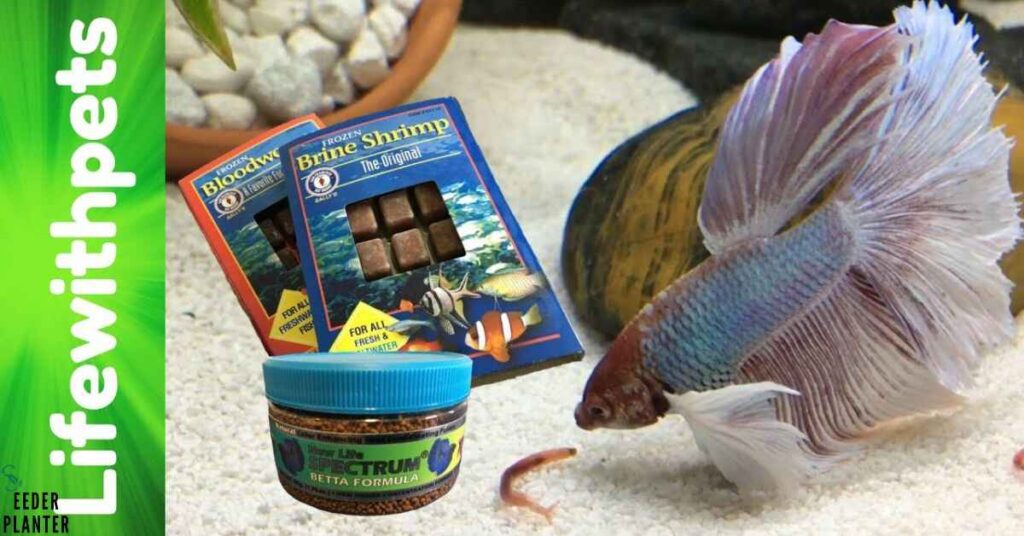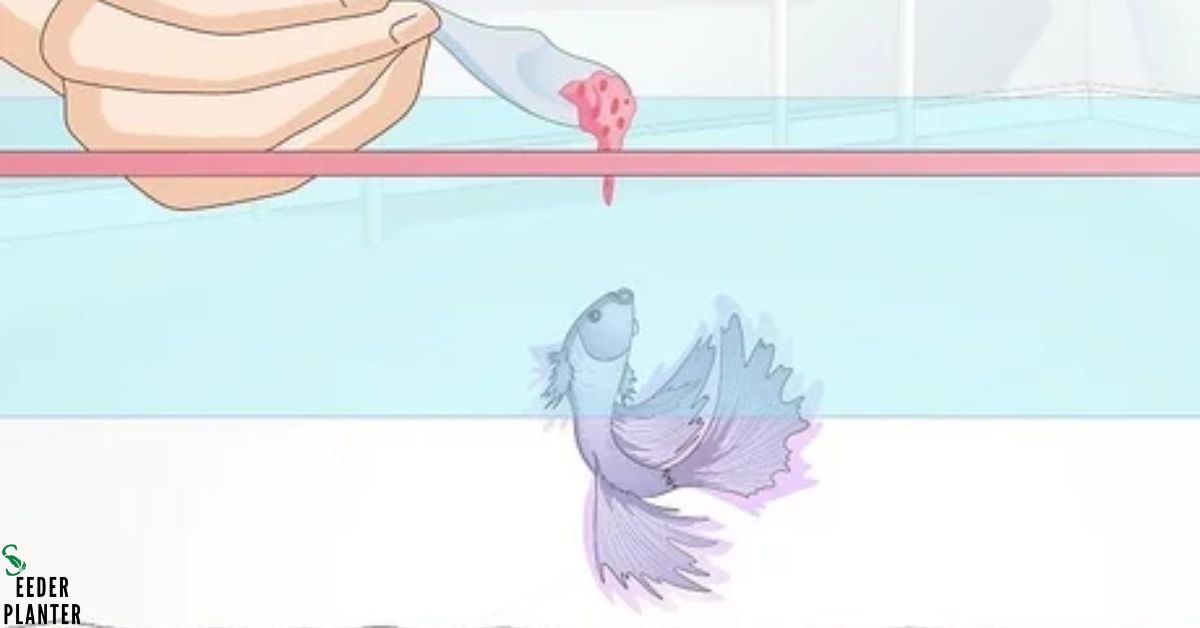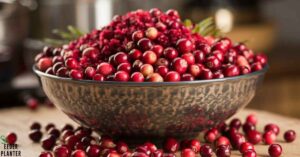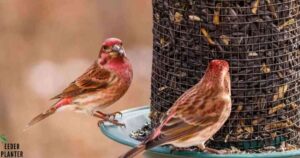Many betta fish owners struggle with feeding schedules, leading to issues like bloating, overfeeding, and poor health. Without the right routine, bettas face digestive discomfort and compromised immune systems, which can shorten their lifespan. It’s essential to understand how often to feed betta fish for optimal health, especially as these carnivorous fish have specific dietary needs. By following a balanced feeding plan, you can prevent overfeeding, avoid stress, and ensure your betta gets the nutrition it needs. This guide covers effective feeding frequencies and practical tips to keep your betta vibrant and thriving.
Betta Fish Diet Overview

Bettas are natural carnivores, thriving on high-protein diets. Their diet in the wild includes insects and larvae, giving them the nutrients they need for strong health, color, and activity. In captivity, a protein-rich diet is essential to maintain their natural strength and beauty. Knowing how often to feed betta fish is critical; overfeeding can cause digestive issues, while underfeeding can lead to a lack of energy and poor immune health. A balanced, protein-focused diet will help keep bettas at their healthiest, supporting their needs as active and vibrant pets.
What Do Betta Fish Eat?
In nature, bettas feed on insects, insect larvae, and small crustaceans, which provide the protein and fat they need. For pet bettas, their diet should mimic this natural intake as much as possible to maintain their health and energy. Specialized betta pellets or flakes, formulated for high protein content, are ideal substitutes. Understanding how often to feed betta fish helps prevent overfeeding, which can cause bloating. High-protein diets that closely resemble a betta’s natural food keep them healthy and active, preserving their vibrant colors and strong immune system.
Commercial Betta Food Options
Commercial foods for bettas come in many forms, each with unique benefits. Pellets and flakes are convenient and often nutritionally balanced, while freeze-dried options like bloodworms and brine shrimp provide extra protein for treats. Live food, though less common, is an excellent source of enrichment and nutrients. Knowing how often to feed betta fish with these options can help prevent overfeeding and keep their health on track. Mixing these food types offers variety and helps meet a betta’s nutritional needs for a longer, healthier life.
Importance of Protein-Rich Food
Protein is essential for bettas to grow, maintain vibrant colors, and stay active. High-protein food, like specially formulated betta pellets or live options, supports muscle growth and overall energy. Without enough protein, bettas may become lethargic and lose their bright color. Understanding how often to feed betta fish protein-rich food is vital to avoid overfeeding, which can lead to bloating. A well-balanced, protein-heavy diet ensures bettas get the nutrients they need to thrive in captivity, reflecting their natural carnivorous diet.
How Often to Feed Betta Fish
Feeding betta fish on the right schedule is essential to their health. A regular feeding routine prevents overeating and helps their digestion stay balanced. Understanding how often to feed betta fish can keep them from becoming bloated or lethargic, which are common issues with incorrect feeding. Bettas usually need two small meals a day, spaced out to avoid overloading their tiny stomachs. By maintaining a steady feeding schedule, you’ll ensure they get the nutrients they need without the risk of overeating, which can harm their health.
General Feeding Guidelines for Adult Bettas
Adult bettas do well with a feeding schedule that offers small meals twice per day. Feeding in the morning and again in the evening is ideal for adult bettas, helping them digest easily without overeating. This routine ensures they stay energetic and reduces the risk of bloating. Knowing how often to feed betta fish also helps keep their water clean, as uneaten food can break down and create waste. A simple twice-a-day routine suits most adult bettas, keeping them healthy and content.
How Often to Feed Betta Fish a Day
Aiming to feed your betta twice per day, ideally about 12 hours apart, is optimal. This gives them time to digest between meals, keeping their metabolism active and balanced. Feeding too close together can cause digestive issues, while long gaps can lead to low energy. This frequency also makes it easy to monitor how often to feed betta fish and their response to food. Keeping a consistent schedule provides the right amount of nutrients and keeps bettas active and lively.
Feeding Routine for Consistency
Bettas thrive on routine, and a regular feeding schedule reduces their stress and keeps their health in check. Feeding at the same times each day helps bettas recognize when to expect food, making them more relaxed and less likely to overeat. Understanding how often to feed betta fish while sticking to a routine also makes it easy to manage their water quality. Consistent feeding routines keep bettas calm, healthy, and ready for meals without overfeeding or wasted food in the tank.
How Many Pellets to Feed Betta Fish
Betta pellets are a popular feeding choice, but portion control is crucial. Bettas have small stomachs, so feeding them just a few pellets per meal prevents overfeeding. The general guideline is to feed as many pellets as would fit in one of their eyes, ensuring they don’t get too much at once. Knowing how often to feed betta fish, along with the right pellet quantity, keeps them healthy and avoids digestive issues. Portioning their food accurately helps them digest well and avoid bloating.
Determining the Right Pellet Size and Count
Pellet size varies by brand, so choosing the right size and quantity is important for your betta’s health. Generally, bettas should be fed pellets that fit their small mouths comfortably. A few pellets per meal, based on pellet size, are usually enough. Understanding how often to feed betta fish along with pellet size helps prevent overeating, keeping bettas healthy and active. Proper pellet size ensures they get the nutrition they need without excess food in their system.
Adjusting Pellet Count by Betta Age and Activity Level
Young or highly active bettas may need a few more pellets per meal compared to older or less active ones. Young bettas are still growing, so they require a bit more protein to support that growth. Knowing how often to feed betta fish and adjusting pellet count based on age and energy keeps them nourished without overfeeding. This adjustment also keeps their diet balanced, supporting their health throughout different life stages.
Avoiding Overfeeding: Key Tips
Overfeeding is a common issue with bettas and can lead to problems like bloating and digestive stress. Feeding only the recommended pellet amount prevents excess food in the tank, which can spoil and harm water quality. Observing how often to feed betta fish and watching for signs of bloating or lethargy helps you avoid overfeeding. Keeping a close eye on their behavior and appetite ensures they stay healthy, without risking digestive discomfort.
Feeding Baby Betta Fish
Baby bettas, also called fry, need special attention when it comes to feeding. Unlike adults, they require smaller portions but more frequent meals throughout the day. How often to feed betta fish in their early stages is crucial for growth, typically requiring multiple small meals to fuel their development. Since baby bettas grow rapidly, giving them the right food at the right time supports healthy growth and keeps them active. Offering suitable foods regularly is key to helping these young fish thrive.
How Often to Feed Baby Bettas
Baby bettas need more frequent meals compared to adults. Usually, feeding four to five times per day is best for fry, as they need constant nutrients to support their fast growth. Knowing how often to feed betta fish at this stage ensures that baby bettas get the energy needed to grow. Small, frequent feedings provide the right balance, making it easy for them to digest and absorb nutrients. This schedule supports healthy development and prepares them for the adult feeding routine.
Suitable Food Types for Fry
Baby bettas need tiny food particles that they can easily consume, such as micro-pellets, brine shrimp, or specific fry foods. These foods are formulated for small fish and provide a good mix of proteins and fats that are essential at this stage. Choosing the best food for baby betta fish helps them get the nutrients needed for growth and energy. Feeding them the right food also prevents the risk of overfeeding or waste buildup in the tank, promoting a clean and healthy environment.
Nutritional Requirements for Growth
Young bettas need a diet high in protein and calories to support rapid growth. Foods rich in protein help build their body mass and enhance their colors. Knowing how often to feed betta fish with high-quality growth foods like baby brine shrimp or micro-pellets is essential to meet their energy demands. These nutritional requirements support development, immune health, and vibrant coloring, setting the foundation for a healthy adult betta. Regular, nutrient-rich meals contribute to their overall health and longevity.
Betta Feeding Tips for Optimal Health
Following a few key feeding practices can help keep your betta fish in great shape. A steady feeding routine and high-quality food choices are essential for their health. Understanding how often to feed betta fish, along with the best food for them, can prevent common issues like bloating or malnutrition. Regularly checking their diet, feeding amounts, and habits can support their immune system, reduce stress, and keep them active and colorful. A balanced diet and mindful feeding ensure that your betta stays healthy.
Using a Feeding Schedule
A consistent feeding schedule helps your betta adjust to regular mealtimes, reducing stress and improving digestion. Feeding at the same times each day helps avoid overfeeding and makes it easier to monitor their intake. This consistency in how often to feed betta fish builds a routine they can depend on, helping them feel secure. A regular schedule also helps keep the tank cleaner, as there’s less leftover food, promoting a healthy environment for your betta.
Monitoring Tank Temperature and Feeding
Tank temperature affects a betta’s digestion and feeding needs. Bettas digest food better in warmer water, so maintaining a stable temperature, around 76-80°F (24-27°C), is ideal. Knowing how often to feed betta fish and adjusting the tank’s conditions promotes a smooth feeding process and prevents health issues. In colder water, digestion slows down, leading to potential bloating. By monitoring the temperature, you help your betta stay healthy and make feeding more effective.
Read This Blog: Nature’s Aerial Mosquito Squad: Do Birds Eat Mosquitoes?
Recognizing Signs of Underfeeding and Overfeeding
Overfeeding or underfeeding can lead to health problems in bettas. Signs of overfeeding include bloating and lethargy, while underfeeding may cause weight loss and reduced energy. Understanding how often to feed betta fish and watching for these symptoms helps keep their diet balanced. Observing your betta’s appearance and behavior lets you adjust feeding if needed. Ensuring proper portion sizes and a regular schedule helps prevent common feeding-related issues.
Also Read This Blog: Can Birds Eat Popcorn? A Comprehensive Guide for Bird Enthusiasts
Adding Treats to the Diet (When and What)
Adding treats occasionally adds variety to your betta’s diet. Treats like freeze-dried bloodworms or brine shrimp can be offered once or twice a week for a nutritional boost. Using treats sparingly ensures that they don’t replace essential daily nutrients. Knowing how often to feed betta fish treats can help them get extra protein without risking overeating. By using treats wisely, you provide variety and support their natural diet, keeping them healthy and engaged.
Automatic Feeders for Consistency
Automatic feeders can help maintain a consistent feeding routine, especially if you’re away. These devices allow you to set specific feeding times and portions, making it easier to stick to a schedule. Choosing a reliable automatic feeder for how often to feed betta fish ensures that they receive regular, balanced meals. This setup prevents overfeeding and reduces stress, as they get meals on time even when you’re busy. An automatic feeder offers convenience while keeping your betta’s feeding routine stable.
Frequently Asked Question
What if My Betta Refuses to Eat?
If your betta won’t eat, it could be due to stress, low water temperature, or dislike of a new food type. Try warming the tank, offering familiar foods, and checking water conditions. If refusal persists, consider consulting a vet.
Can I Feed My Betta Live Food?
Yes, bettas can enjoy live food like brine shrimp or bloodworms, which are rich in protein. However, only use safe, disease-free sources and introduce live food gradually to avoid stress or digestive issues.
How Long Can Betta Fish Go Without Food?
Bettas can generally go 3-4 days without food, but avoid prolonged fasting unless necessary. If you’re away, consider using an automatic feeder or asking someone to feed them to ensure they stay healthy.
What Temperature Should I Maintain for Feeding?
Bettas eat best when the tank temperature is around 76-80°F (24-27°C). A stable, warm environment supports digestion and keeps their appetite strong. Lower temperatures can slow metabolism, affecting feeding behavior.
How Do I Avoid Leftover Food in the Tank?
To prevent leftover food, feed only what your betta can consume in two minutes. Remove any excess with a net to keep the tank clean, as leftover food can affect water quality and lead to health issues.
Conclusion
Maintaining a consistent feeding schedule with high-quality food is essential for your betta’s health. Avoid overfeeding, follow a set routine, and keep the tank conditions stable. Providing a balanced diet and observing your fish’s eating habits ensure a happy, healthy betta. By staying attentive to your betta’s needs, you’ll help them thrive in their environment.

I am Alexander James, a seasoned professional with 4 years of expertise, brings passion and skill to every project. Elevate your experience with my knowledge and creativity.



![Hollyhock Seeds: The Complete Guide to Success [2024]](https://seederabout.com/wp-content/uploads/2024/10/Hollyhock-Seeds-The-Complete-Guide-to-Success-2024-300x157.jpg)





